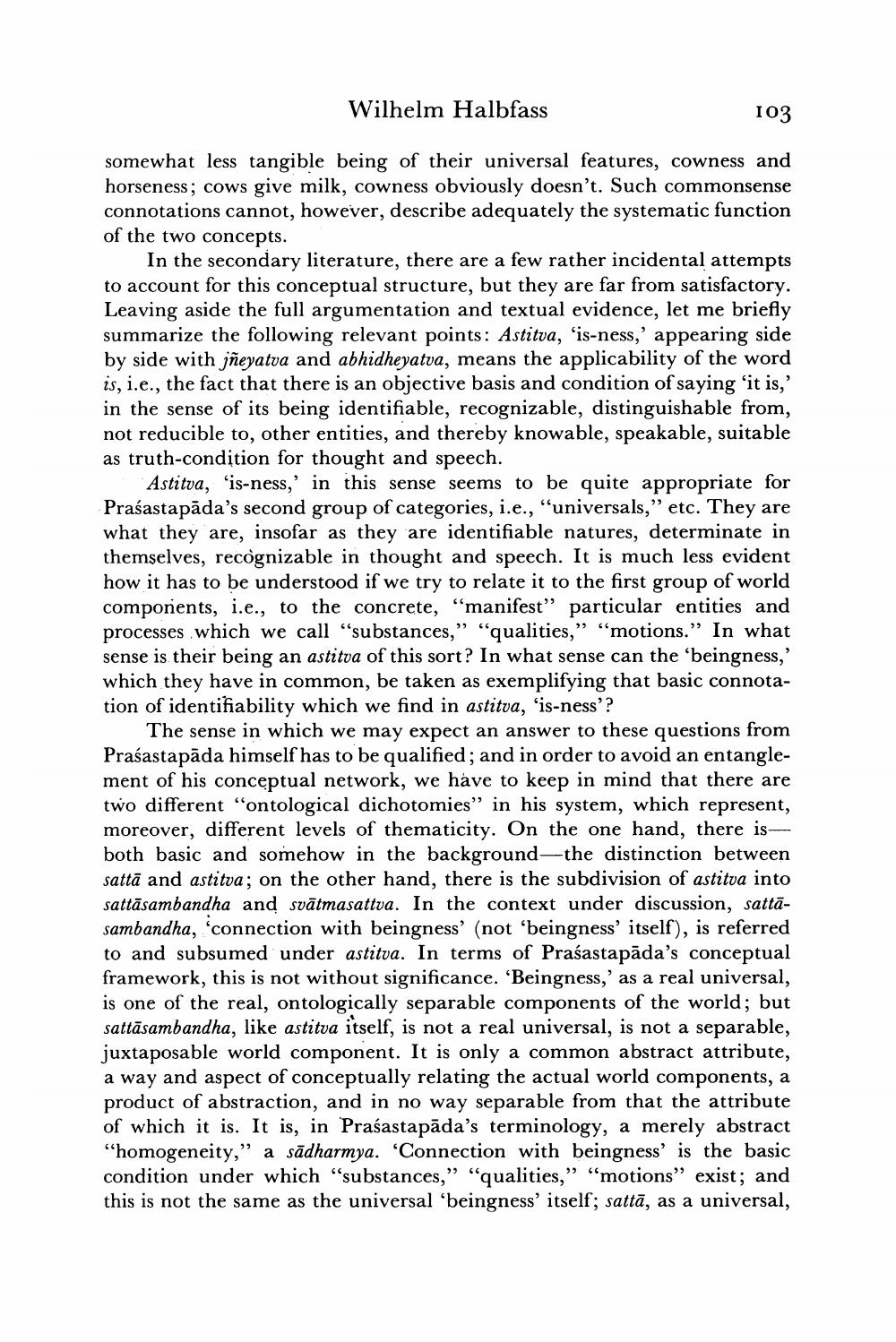________________
Wilhelm Halbfass
103
somewhat less tangible being of their universal features, cowness and horseness; cows give milk, cowness obviously doesn't. Such commonsense connotations cannot, however, describe adequately the systematic function of the two concepts.
In the secondary literature, there are a few rather incidental attempts to account for this conceptual structure, but they are far from satisfactory. Leaving aside the full argumentation and textual evidence, let me briefly summarize the following relevant points: Astitva, 'is-ness,' appearing side by side with jñeyatva and abhidheyatva, means the applicability of the word is, i.e., the fact that there is an objective basis and condition of saying “it is,' in the sense of its being identifiable, recognizable, distinguishable from, not reducible to, other entities, and thereby knowable, speakable, suitable as truth-condition for thought and speech.
Astitva, 'is-ness,' in this sense seems to be quite appropriate for Prasastapāda's second group of categories, i.e., "universals,” etc. They are what they are, insofar as they are identifiable natures, determinate in themselves, recognizable in thought and speech. It is much less evident how it has to be understood if we try to relate it to the first group of world components, i.e., to the concrete, “manifest" particular entities and processes which we call "substances," "qualities," "motions." In what sense is their being an astitva of this sort? In what sense can the 'beingness,' which they have in common, be taken as exemplifying that basic connotation of identifiability which we find in astitva, 'is-ness'?
The sense in which we may expect an answer to these questions from Prasastapāda himself has to be qualified; and in order to avoid an entanglement of his conceptual network, we have to keep in mind that there are two different "ontological dichotomies" in his system, which represent, moreover, different levels of thematicity. On the one hand, there is - both basic and somehow in the background—the distinction between sattā and astitva; on the other hand, there is the subdivision of astitva into sattāsambandha and svātmasattva. In the context under discussion, sattāsambandha, 'connection with beingness' (not 'beingness' itself), is referred to and subsumed under astitva. In terms of Prasastapāda's conceptual framework, this is not without significance. 'Beingness,' as a real universal, is one of the real, ontologically separable components of the world; but sattāsambandha, like astitva itself, is not a real universal, is not a separable, juxtaposable world component. It is only a common abstract attribute, a way and aspect of conceptually relating the actual world components, a product of abstraction, and in no way separable from that the attribute of which it is. It is, in Prasastapāda's terminology, a merely abstract “homogeneity,” a sādharmya. "Connection with beingness' is the basic condition under which “substances,” "qualities," "motions” exist; and this is not the same as the universal 'beingness' itself; sattā, as a universal,




